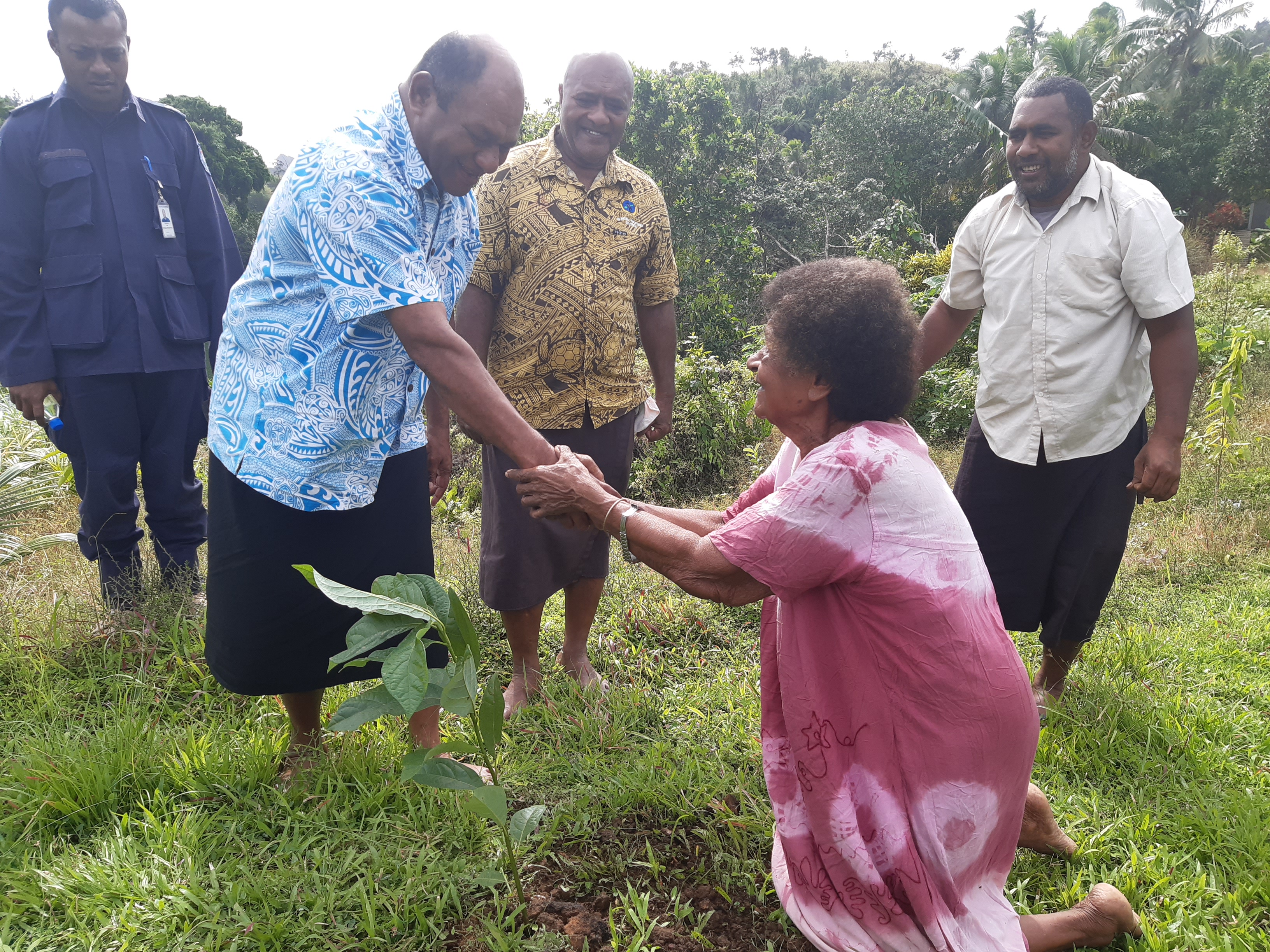
Tree Planting is important to combat the effects of climate change
For 85-year-old Unaisi Logawai of
Rauriko Village in the district of Dogotuki, Macuata climate change and its
impact are real. She has witnessed firsthand the reality of how the change in
weather patterns and the change in climatic seasons has affected her community.
Speaking in iTaukei language, Unaisi says that while growing up she can definitely see the differences that climate change has brought about. For more than eight decades she has seen the drastic impact climate change has caused in her island home.
“I feel that we have limited time on our hands to address the effects of climate change. We need to work together now to combat this issue as a community and I believe we also need to work with Government,” she said.
She is of the view that in order to plant a lot more trees will surely help absorb carbon dioxide and so there are less emissions into the earth’s atmosphere which is causing global warming and in turn the change in weather patterns.
Unaisi made the comments during a recent official visit by the Honourable Minister for Forestry, Mr Osea Naiqamu to Rauriko village where he encouraged villagers to participate in Fiji’s 30MillionTreesin 15Years (30MT15Y) initiative.
Minister Naiqamu is currently in Vanua Levu on a two week visit where he first visited Qaranivai Village in the district of Udu.
He has since visited Lagi, Nukudamu, Nabuono, Vunikodi, Yasawa, Gasauva, Waqaitakea, Tawake, Wainigadru, Rauriko and Namuka-i-Lau villages in the districts of Udu and Dogotuki.
Relaying recent experiences, Unaisi said that the village is situated beside a river and they now experience frequent flooding each time there is heavy rain or during a cyclone. She said the village is also facing sea level rise as the shoreline continues to move further inland.
“Trees that bear fruit in the months of December to January and other months no longer do so and I believe these are because of the change in weather patterns. Birds that used to fly around our village when I was young can no longer be seen today. We have had to rebuild or relocate our homes a few times because of flooding in the village.”
These she said were challenges faced now, to which she did not encounter while growing up.
Considered one of the matriarchs with an outspoken personality, villagers often seekUnaisi’s advice on village matters. She also held the post of village headman (turaga-ni-koro) at one time for 10 years.
“We are the last generation with the opportunity to save our communities from theimpact of climate change. The Ministry of Forestry’s reforestation plan is a good idea as villagers will be able to have a tree planting plan for the short-term, mid-term and long-term.”
Fiji as a small island developing state (SIDS) in the tropical Pacific region is proud to be leading the initiative of planting 30 million trees in 15 years with 2 million trees being planted annually.
Communities are highly vulnerable to the effects of climate change and these impacts are projected to further intensify under the anticipated global warming trajectory and impacts which poses a threat to Fiji’s sustainable growth, placing large economic, social and physical stress on local communities and ecosystems.
Fiji’s Emissions Reduction Program (ERP) has been designed to assist communities in reducing carbon emissions, to maximise climate co-benefits and integrate existing local initiatives that address vulnerabilities of local communities and contribute to the effort of building a more resilient nation.
The ERP will begin implementation next month (July 2020), with a focus on 20 districts in Viti Levu, Vanua Levu and Taveuni with an area totalling about 1,685742 ha of critical terrestrial biodiversity. There is an estimate of 734,307 people in these districts who live on hilly areas, coastal plains and undulating rolling hills of peri-urban areas.
These 20 districts are at high risk of forest loss and degradation and are areas with large communities and settlements at the forest edge and areas with high poverty and known biodiversity hotspots. Fiji’s ER program has targeted to develop and implement 20 Integrated District Land Use Management Plans with the support of 120 communities and 40 community level integrated Land Use Plans of which will significantly include tree planting initiatives and forest conservation efforts.
The overall impact of Land Use Plans is anticipated to result in avoiding deforestation in 9,500 ha, enhance forest carbon stocks through tree planting initiatives at community level in 11,750 ha and enhance forest carbon stocks involving plantations in 7,532 ha and reducing forest degradation by implementing sustainable harvesting of Fiji’s native forests in 8,500ha.
Fiji’s ER Program will more importantly contribute to the 30MT15Y initiative and for this Minister Naiqamu has said the renewed massive tree-planting programme signifies the Fijian Government’s commitment to elevate the importance of trees and forests as it is critical to nation building, whilst reviving our kinship with nature and its relevance to our very own existence on this Planet.
He said Fiji’s tree-planting initiative is also part of the global reforestation movement to increase the Planet’s ability to absorb carbon, and ultimately address climate change.
Minister Naiqamu added, the Ministry of Forestry has just recently launched a survey and dashboard for the 30MT15Y which records a tally of trees planted by individuals, corporate organizations and communities.
He is encouraging Fijian citizens to log onto the Ministry’s website www.forestry.gov.fj each time they plant and to record their tally of trees planted with the Ministry as everyone’s contribution to the 30MT15Y campaign counts.